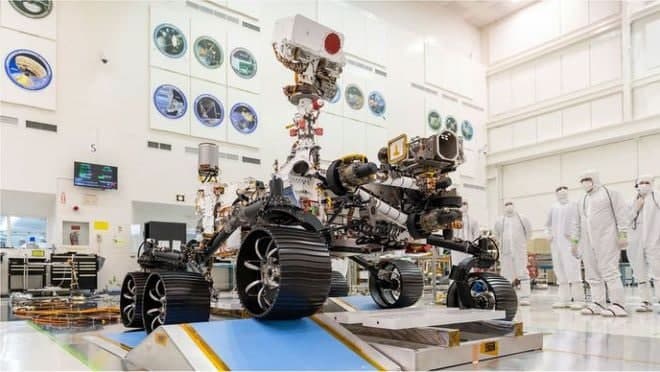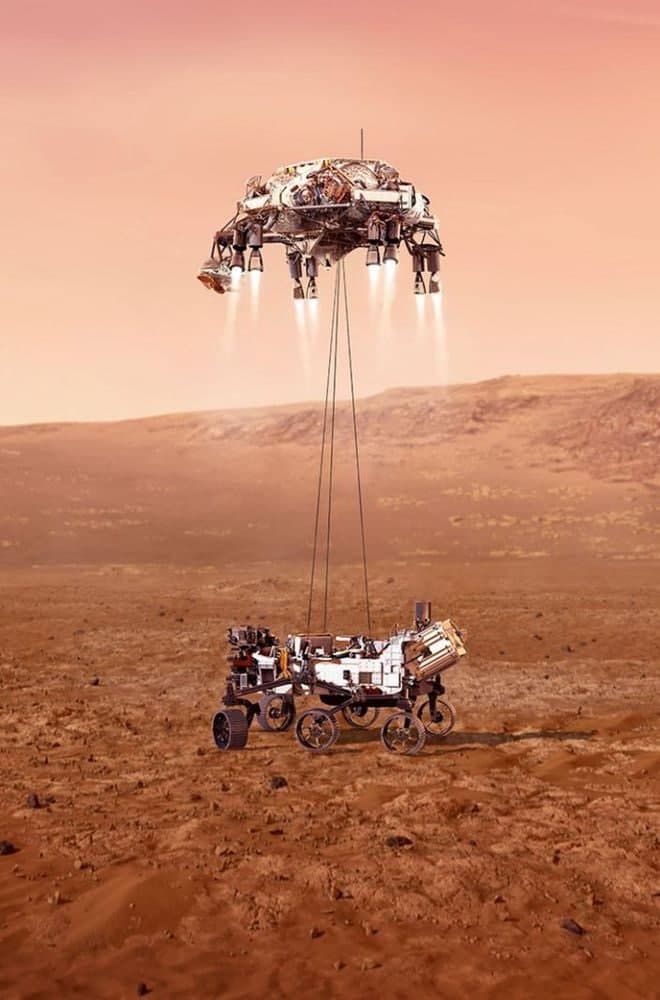The National Aeronautics and Space Administration (NASA) recently demonstrated how the one-ton rover “Perseverance” will land on Mars on February 18 next year. The “Perseverance” rover will be sent to a crater named “Jezero” Jezero on Mars to find evidence of the existence of life on Mars. But to carry out this research, the rover must first achieve a soft landing.
The sequence of procedures for landing on Mars is often called the “Seven Minutes of Terror,” and there are good reasons to say so. Each Mars exploration mission has to complete complicated procedures in such a short time, otherwise, a large crater will be smashed on the surface of Mars. More importantly, all procedures during the landing process are completed automatically.

NASA Perseverance will land on Mars in February next year, explaining the “seven minutes of terror” of landing
On that day, the distance between the Earth and Mars was 209 million kilometers, and every movement during the descent must be controlled by the onboard computer. The entire landing process started more than 100 kilometers above Mars. The “Perseverance” rover will encounter the first atmosphere of Mars.
At this time, the rover in the protective capsule is falling at a speed of 20,000 kilometers per hour. In just over 400 seconds, the descent system must reduce the speed of the rover to less than 1 meter per second.
Most of the work is done by the heat shield. As the protective capsule deepens into the Martian atmosphere, the heat shield will become hotter and hotter, exceeding 1,000 degrees Celsius. But at the same time, atmospheric drag will greatly slow down the rate of decline.
When the 21.5-meter-wide supersonic parachute was deployed from the rear of the protective cabin, the speed had been reduced to 1,200 kilometers per hour. The “Perseverance” rover will use a parachute to descend a little more than a minute to further slow down the descent. However, the most complicated procedure is yet to come.

At 2 kilometers from the surface of Mars, the descent speed of the rover will be reduced to 100 meters per second. At this time, the “Perseverance” rover and the “Skycrane” that helped it descend will separate from the protective capsule. Subsequently, the 8 rockets carried on the “Sky Crane” ignited and hovered the “Perseverance” rover above the landing site. The rover will use nylon rope to descend to the surface of Mars, but this has not been completely successful.
Once the “Perseverance” rover senses that it touches the ground, it must immediately cut the cable, otherwise, it will be dragged away from the safe landing site by the “sky crane”.
This procedure is almost the same as that used by NASA’s Curiosity rover on the surface of Mars eight years ago. But the difference is that now the navigation tools have been improved to land the Perseverance rover in a more precise landing area.
It is worth noting that on the day the rover landed, the time for radio signals to reach Earth from Mars was approximately 700 seconds. This means that when NASA receives information about entering the Martian atmosphere from the Perseverance, the Perseverance rover may have successfully landed on the surface of Mars.
The “Perseverance” rover will use a camera and microphone to record its descent. If it can survive the landing, these records will be sent back to Earth after landing.
(Source)
